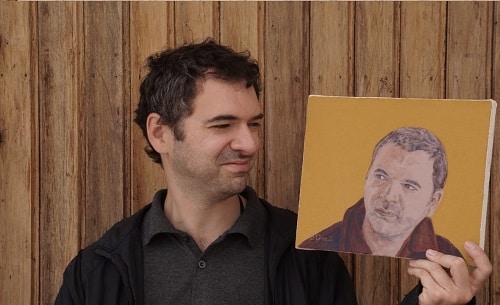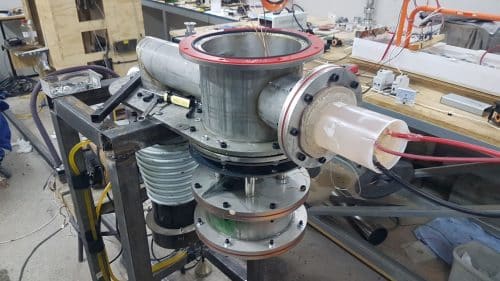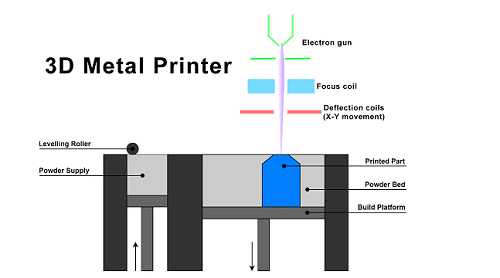
Metal 3D printing has started to gain a lot of traction because unlike most other types of metal manufacturing processes which are based on subtractive manufacturing which requires wasting energy and material in the process, metal 3D printing is an additive manufacturing process that can easily print complex metal parts. But the metal 3D printing technology is still some time away from becoming common in most workplaces. Agustin Cruz, creator of an open-source metal 3D printer, in interaction with EFY’s Sharad Bhowmick says that making Metal 3D printers more accessible will empower people, therefore, accelerating innovations and reducing barriers to scientific research.
Q. Could you briefly tell me about yourself and your Metal 3D printer project?
A.I’m an electrical engineer with more than 10 years of experience building laser machines, robots, and laboratory equipment among other things. I started developing this 3D metal printer to utilize my knowledge and expertise for engineers and DIY around the globe and I believe that this project can especially benefit people from low-income and developing nations.
My project consists of an Open-source low-cost 3D Metal Printer which uses an electron beam to sinter the metal powder. I’m doing the initial work by building a prototype and hope that this project will continue to sustain and improve through collaboration with like-minded people around the world. I plan to utilize collaborative websites, social networks, YouTube, and other channels for increasing my reach.
I will keep the design of my project open so that it can be created, modified, used, or distributed by anyone
Q. What are common types of metal 3D printers and can you discuss the most common among them?
A. There are multiple types of metal 3D printers available in the market and the most common ones among them are laser sintering and electron beam sintering. The working principle for these is very similar and uses sintering. One uses a laser beam for sintering the metal powder while the other type uses an electron beam.
In laser-based metal 3D printers, it is very important to take care of the heat setting and temperature neglection may cause deformation and cracks when the piece cools. So, if you need a durable and strong part when using a laser beam, you need to have a powerful oven to heat the metal part and gradually cool it to eliminate internal stress.
Whereas, with electron beam printing you don’t need an additional oven. The electron beam can be defocussed to pre-heat the powder, so you focus it again to start the sintering process according to your design.
Q.What kind of metal 3D printer have you developed, and can you explain its working principle?
A. The metal 3D printer I’ve developed is based on electron beam melting where the raw materials are fused together, from heating by an electron beam.
This printer uses an electron beam to selectively melt each layer of metal powder, causing the powdered particles to fuse together. After completion of each layer, the build platform moves down one layer in height. The re-coater comes again with a fresh layer of powder, and the electron beam starts to induce the fusion of powder particles, causing the new layer to form. This process is repeated until the entire part is finished, thus making a solid metal part.

Q. What are the most important components of a Metal 3D printer?
A. All the parts used in the metal 3D printer are very important, but according to me, the lenses are the most important parts. The 3D Metal Printer uses two types of magnetic lenses. The electron beam travels through these magnetic lenses that focus the beam onto the working area for sintering the metal powder. Both types of lenses are made up of coils. I have used Arduino to control the two lense. The two lenses are:
Focus lens: focus the electron beam to a small point (less than 0.5mm diameter).
Deflection lens: moves the focused beam in the X-Y plane according to the 2D design of each layer (2D slices of a 3D object).

Q. What is the height of each printed layer and on what basis do you select layer height?
A. Each layer’s height can vary from 0.05mm to 0.1mm in thickness. The lower layer height provides finer details in the final metal piece whereas increasing the layer thickness reduces the printing time.
The layer height depends on the metal powder particle diameter. If a finer metal powder particle is used, then you need to make the layer height smaller. The typical particle diameter is between 50 to 100 micrometers (0.05-0.1mm).
Q. Have you developed your own slicing algorithm or are you using an open-source software?
A. No, I have not developed any proprietary software. My 3D Metal Printer will use an open-source 3D Printing software such as Cura, Slic3r, or any other commonly used open-source slicing software.
The hardware algorithm is programmed into the Arduino boards to make it easier to modify and distribute by anyone. All the codes, designs, and schematics will be made available online.
Q. What is the power consumption and what kind of printing material can be used with your printer?
A. The total power consumption is around 1500 watts, including the power consumed by the vacuum pumps. The electron gun consumes only around 100W. This 3D Metal Printer is capable of printing with titanium powder, stainless steel powder, Aluminium alloys, and a few other metal alloys.
Q. What benefits does your 3D metal printer have?
A. 3D Metal Printing is an impactful tool. Making it more accessible will democratize science, and engineering and empower people. This low-cost hardware will be able to accelerate innovations and lower the barriers to scientific research.
Apart from big R&D firms, the small entrepreneurs will benefit from this project. Especially early-stage entrepreneurs that are not yet financially secure enough to easily afford a 3D Metal Printer. Increasing access for these entrepreneurs ensures greater representation and impact, thus, paving pathways for more deep-tech innovations.
Apart from the obvious users, a low-cost metal 3D printer has many other use cases such as in hospitals located away from major cities, 3D Metal Printing will be practical when supplies run low. Another such usage is in Agriculture, Architecture, etc.
Adopting open-source approaches play a key role in this process. Hence, I’ve planned that the 3D Metal Printer design, plans, videos, and schematics will be open and free for any person in the world.
Q: Please tell us about the current status of your project?
A. Currently, there is an advanced functional prototype, with more than 5 years of research and development with my own capital. This prototype is used to carry out initial tests and verify technical aspects before making larger investments.
The prototype is composed of a vacuum chamber made of stainless steel, a vacuum pump system, an electron gun, high voltage power sources, electrical connections, cooling systems, and sensors, among others. The prototype is capable of generating a 0.5mm diameter electron beam, focusing it on a metal surface and moving it on the XY axis. In this way, it is possible to heat a metal piece using the electron beam.
Currently, I am working on optimization of the electron gun, and evaluating different configurations to reduce the size of the spot from 0.5mm to 0.1mm in diameter or less. Once this technical milestone is achieved, the next step will be to add the Z-axis and a metal powder re-coater. The Z-axis will be composed of a stepper motor, guides, linear bearings, and a controller.
So, this is what I do full-time, and it’s not cheap. Doing all this takes a lot of time and effort. Now I am opening this project to the community through a crowdfunding model. The design, tests, and updates will be shared soon so that I can receive some support and continue working 100% on this project.
To get more details about Agustin’s 3D Metal Printer Project and support his project click here




